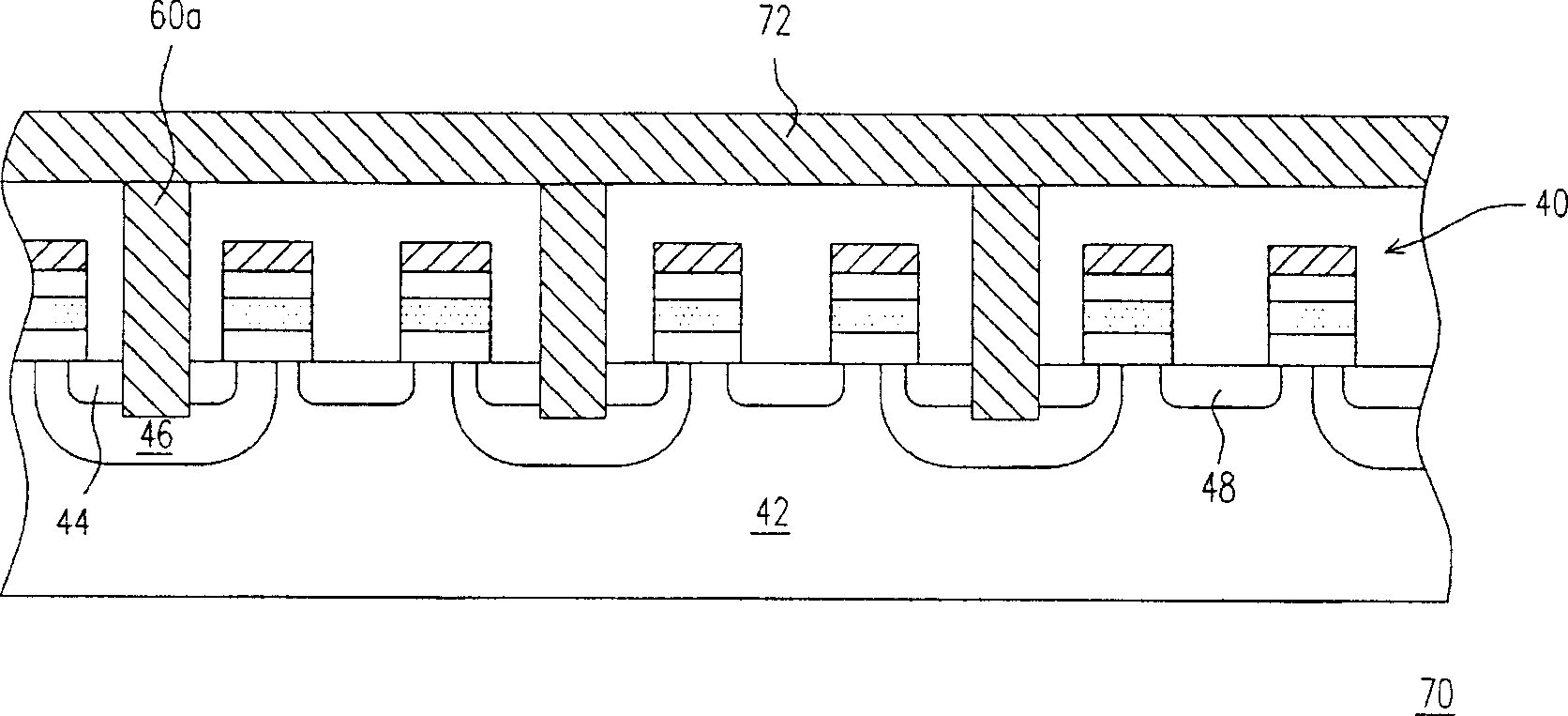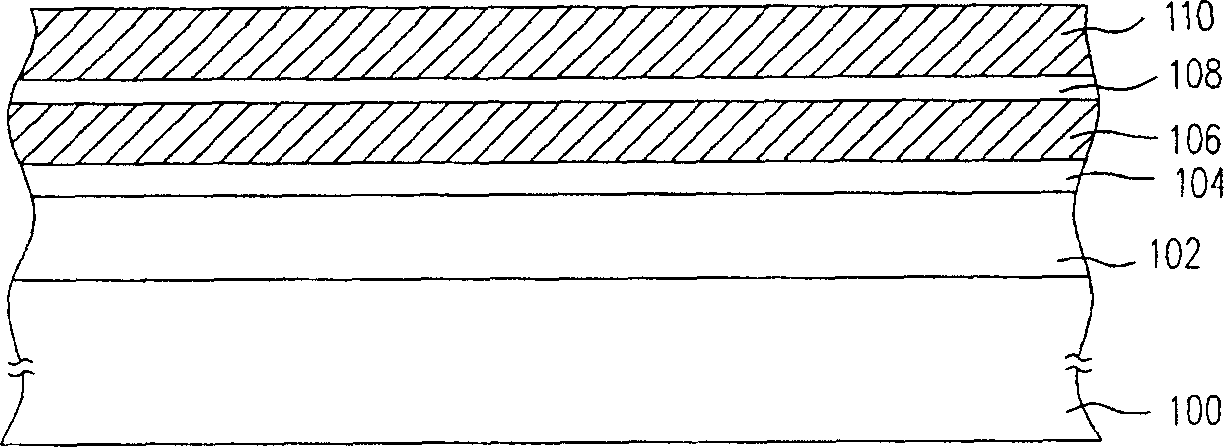Quickflashing memory unit and its manufacturing method
A storage unit and manufacturing method technology, applied in semiconductor/solid-state device manufacturing, electrical components, electrical solid-state devices, etc., can solve problems such as high process difficulty, slow component operation speed, and increase the complexity of the back-end process, to achieve The effect of increasing the reading rate and improving the performance of the device
- Summary
- Abstract
- Description
- Claims
- Application Information
AI Technical Summary
Problems solved by technology
Method used
Image
Examples
no. 1 example
[0048] Figure 2A to Figure 2E A cross-sectional view of a manufacturing process of a flash memory unit according to a preferred embodiment of the present invention is shown.
[0049] Please refer to Figure 2A First, a p-type shallow well region 102 is formed in an n-type substrate 100 , and then a dielectric layer 104 , a conductive layer 106 , a dielectric layer 108 and a conductive layer 110 are sequentially formed on the n-type substrate 100 . Wherein, the material of the dielectric layer 104 is, for example, silicon oxide, and its forming method is, for example, thermal oxidation. The material of the dielectric layer 108 is, for example, silicon oxide / silicon nitride / silicon oxide, etc., or is composed of a silicon oxide layer or a silicon oxide / silicon nitride layer, etc., and its formation method is, for example, Low Pressure Chemical Vapor Deposition (Low Pressure CVD) , LPCVD). The material of the conductor layer 106 and the conductor layer 110 is, for example, po...
no. 2 example
[0063] In the present invention, the doped region can also be formed in the n-type drain region and the p-type shallow well region first, and then a metal silicide layer is formed in the n-type drain region, so as to reduce the energy required in the process of forming the doped region . Figure 3A to Figure 3B That is a cross-sectional view of a part of the manufacturing process of a flash memory unit according to another preferred embodiment of the present invention. The components in this embodiment are the same as those in the first embodiment, that is, they are denoted by the same reference numerals. For the forming method and materials, please refer to the description of the first embodiment, and will not be repeated below.
[0064] Please refer to Figure 3A , according to the above example Figure 2A to Figure 2B completed by the description of Figure 2BAfter the structure shown, a photoresist layer 122 with an opening 124 is then formed on the n-type substrate 100...
no. 3 example
[0068] Figure 4A to Figure 4B A schematic cross-sectional view of a part of the manufacturing process of a flash memory unit according to another embodiment of the present invention is shown. Please refer to Figure 4A , according to the first embodiment Figure 2A to Figure 2B completed by the process described Figure 2B After the structure shown, a mask layer 140 having an opening 142 is then formed on the n-type substrate 100 . Wherein, the opening 142 exposes the n-type drain region 114b. Then, the metal silicide layer 120a is formed in the n-type drain region 114b by using the mask layer 140 as a mask. In particular, the metal silicide layer 120 penetrates the junction of the n-type drain region 114 b and the p-type shallow well region 102 . At this time, the n-type drain region 114 b is electrically shorted to the p-type shallow well region 102 through the metal silicide layer 120 .
[0069] In a preferred embodiment, the method of forming the metal silicide laye...
PUM
 Login to View More
Login to View More Abstract
Description
Claims
Application Information
 Login to View More
Login to View More - R&D
- Intellectual Property
- Life Sciences
- Materials
- Tech Scout
- Unparalleled Data Quality
- Higher Quality Content
- 60% Fewer Hallucinations
Browse by: Latest US Patents, China's latest patents, Technical Efficacy Thesaurus, Application Domain, Technology Topic, Popular Technical Reports.
© 2025 PatSnap. All rights reserved.Legal|Privacy policy|Modern Slavery Act Transparency Statement|Sitemap|About US| Contact US: help@patsnap.com



